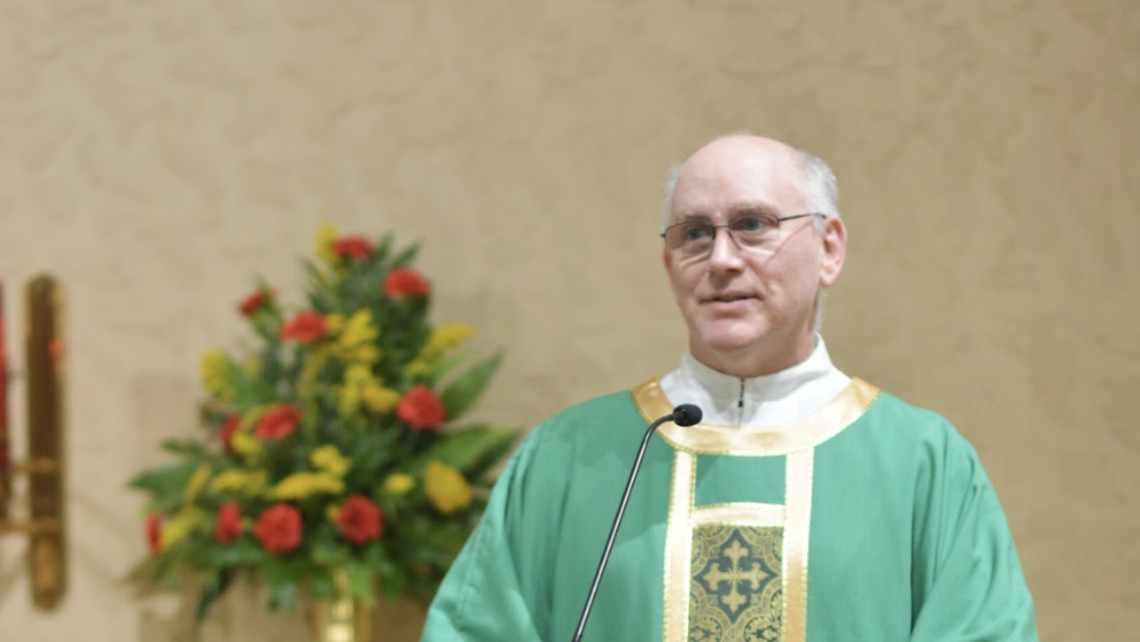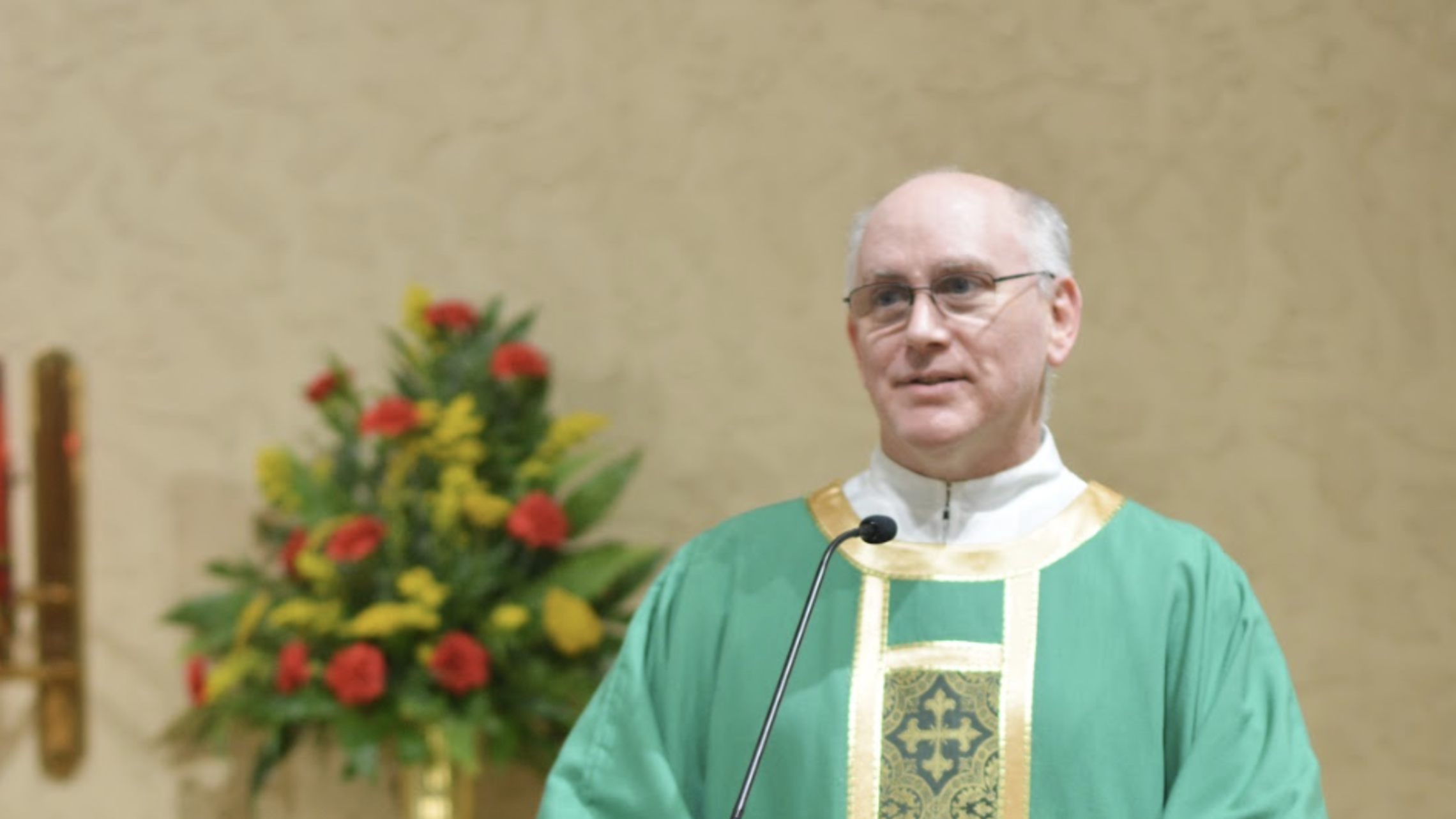
Fourth Sunday of Advent Cycle B
2 Samuel 7:1-5, 8-11, 16; Romans 16:25-27; Luke 1:26-38
One of the things that I have really enjoyed about being a father is watching again the movies that I loved when I was a child, this time with my son, and seeing the enjoyment he takes in them that I had when I was young. One of those movies was the first Indiana Jones movie, Raiders of the Lost Ark. As a young boy, that movie has everything: daring escapes, fights, evil Nazis, and hidden treasure. As I thought he would, my son loved it, and for several years afterward, if someone asked him what he wanted to be when he grew up, he’d say an archaeologist. The hidden treasure in that movie, the Lost Ark, is the subject of the first reading: the Ark of the Covenant, the box constructed according to God’s instructions in the Book of Exodus which housed the tablets of the Ten Commandments, a pot of manna collected during the journey through the desert, and Aaron’s staff. The Ark was carried by the Israelites everywhere they went from then on, both in the Sinai Desert as well as the Promised Land once they reached it, and when they stopped, the Ark was housed in the Tabernacle. Tabernacle, in Hebrew, means tent, for that is what it originally was: a tent, constructed according to God’s instructions to contain the Ark, to be the first sanctuary. There are a lot more details, all of them fascinating, but this is enough to get us to today’s first reading.
This reading from Second Samuel comes after the Israelites have established themselves in the Promised Land, conquered most of the enemies on their borders, and unified all of the Twelve Tribes under one king, King David. After building his palace in Jerusalem, David has a great idea: let’s build a palace for God in place of the tent to house the Ark. God’s prophet at this time was a man named Nathan, and he initially signed off on the king’s wishes. But then in a dream, God let’s Nathan know just how insignificant this idea was. Pagans built temples to house their gods. Humans may need grand temples to lift their thoughts to an eternal realm, but the one True God will not be confined to any place, and God’s idea of grandeur is so far above that of humans as to make this idea look small. Tabernacle, tent, or temple: it’s all one to God. To show just how lame his idea was, God said that he would build David a house with real grandeur: God would make the House of David into an eternal kingdom.
Now there is a lot of things going on here, and many things we could draw on from the Old Testament as it sets the basis for the New Testament. For instance, we could discuss the fulfillment of the promise of an eternal House of David, fulfilled in Christ due to his lineage through both Joseph and Mary back to David. At the Christmas eve Mass, the long form of the Gospel will spell out that genealogy in great detail, with many names that I as deacon will get to mangle the pronunciation of. While this is both true and important, especially during Christmas, I want to discuss another topic, one which is brought out in the Gospel today.
The “Lost Ark” of the movie title refers to the fact that the Ark of the Covenant was lost after the Babylonian destruction of Jerusalem and its Temple. There are many myths as to what happened to it, whether it was destroyed or hidden, and some people have purported to have found it, but these have never been proven. But we Christians know what happened to it. The angel Gabriel tells us in the Gospel: the Ark of the Covenant was transferred from a golden box to an immaculate woman named Mary. The Tabernacle to house God is no longer a Temple built by David and Solomon. The new tabernacle is the womb of a virgin. The word of God, the Ten Commandments in the first Ark, is now the eternal Word of God, Christ. The jar of manna in the first Ark, the bread that sustained the Israelites fleeing from Egypt, is now the Living Bread of Life which sustains us in the Eucharist. The staff of Aaron, which, although just a stick of dried wood, sprouted new branches and even almonds when placed in front of the first Ark, in the new Ark is a new sprout from the stump of Jesse, considered long dead, at least for rulers in Israel [Numbers 17:23]. The rod, the staff of the first high priest of the Sinai Covenant with Moses has been replaced by the eternal High Priest, Jesus.
A Jew who knows and believes about the significance of events in the Old Testament could point to these things a mere coincidence, and that two events in history can have interesting but nevertheless incidental parallels. And I don’t offer this up as absolute proof of anything, but I do think that, seen with the eyes of faith, it helps us to see a larger picture. At the end of the day, it comes down to faith, and a discernment of God’s will for us that we come to know through study of what God has done in the past. At the end of the day, it comes down to faith, and we honor Mary’s faith that said to God, “Behold, I am the handmaid of the Lord. May it be done to me according to your word.” [Luke 1:38 NABRE].
Like the first Ark, the second Ark is no longer with us physically on earth. Even before her assumption, she ceased to be the Tabernacle on Christmas day, when the Word of God left her womb and entered the world. Christmas will start the process that will continue through Easter and then to Pentecost. On Easter, we will once again discuss the Covenant, this time a new covenant won for us on the cross. At Pentecost, God’s Spirit comes to reside in a yet newer Ark: those that accept the faith in Christ. Each one of us who accept baptism and entry into Christ’s Church become the new tabernacles of God. Mary is our perfect model and example and is held in great esteem for that reason. But it is now up to us to carry Christ into the world. It is up to us to carry out the teachings of Christ in this world. We don’t need Indiana Jones to find the Ark of the Covenant; we only need a mirror.
As we approach Christmas, there is one more aspect to this that we should all consider. Yes, we become tabernacles of God, but so are all the others in the world which we encounter. Even the unbaptized were made by God in his image, and therefore are Arcs that have been made and await God to enter into them. This is why the command to love God and love our neighbor, and yes, love ourselves, is really just an extension of the idea that we are all tabernacles of Christ. So at all times, but especially during this holy time of Christmas, we all must bring Christ to everyone in our lives. We must bring Christ into a world which desperately needs him. Some people will be difficult to recognize as Tabernacles – maybe some of those relative who you will see over the holidays. Nonetheless, Christ on Christmas day comes to save all of us, and, in the spirit of Christmas, we renew our baptismal commitment to be disciples to bring this world closer to being the Kingdom of God.
As we continue with our Mass, may the Bread of Life we receive at communion be our reminder that we are the new Arks, the new tabernacles when Christ resides. May, through the intercession of the Blessed Virgin, we all be strengthened in our Christian call to carry the Christmas message of peace and joy into our world. May we be greeted by Jesus at the end of the age by the same words given to Mary by Gabriel: Hail! Full of grace. The Lord is with you.

